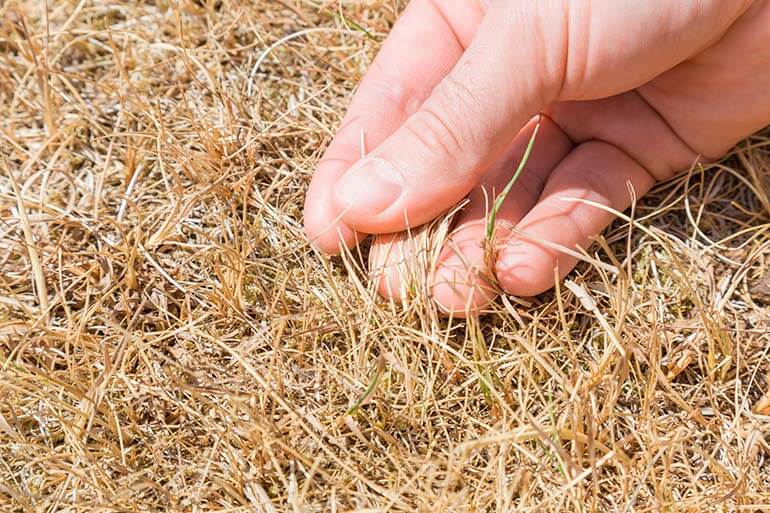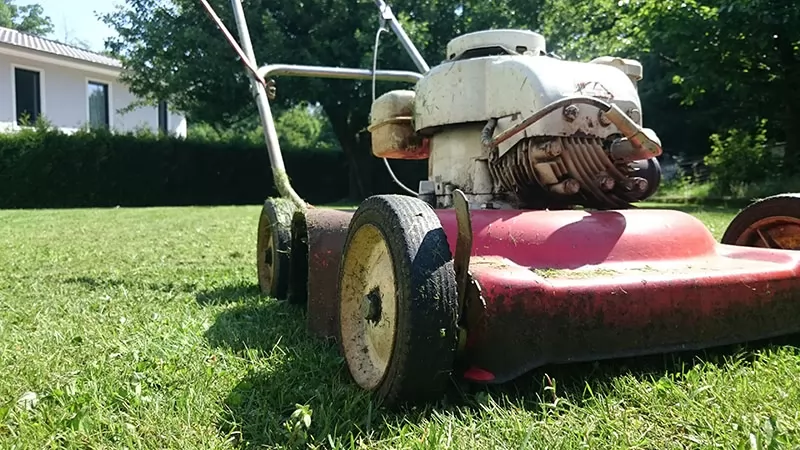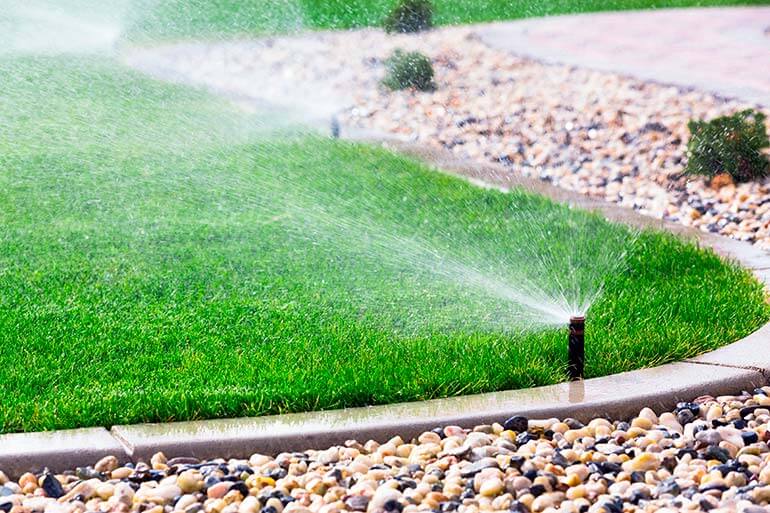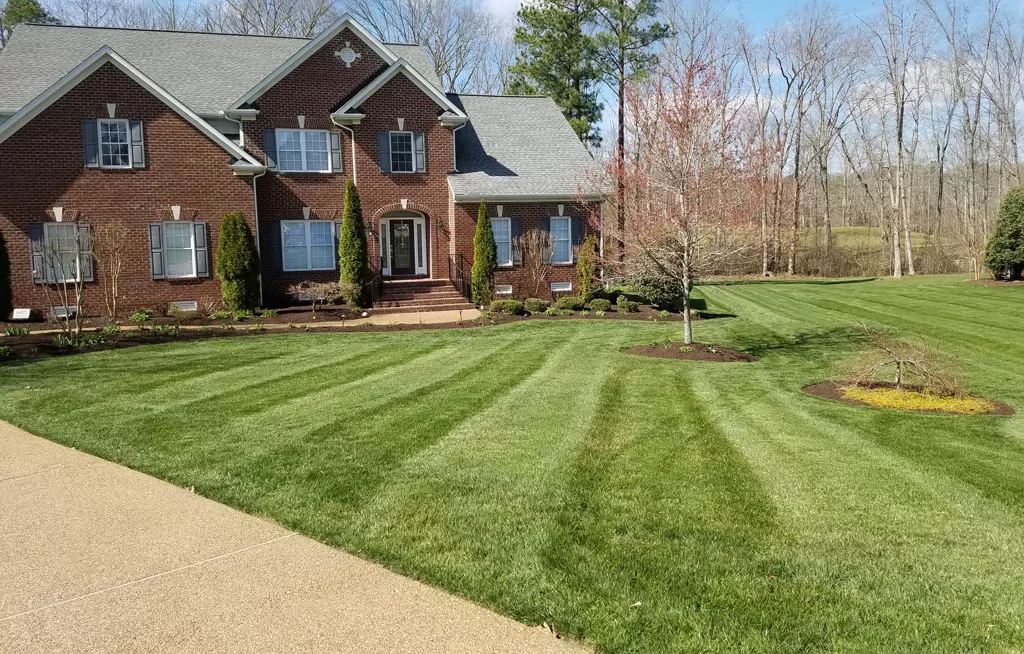We bet that has become one of the most common questions that pop into your head.
You wish you could turn back time to the good all days of your grass. That time when your lawn was well-manicured, and it added to the curb appeal and enjoyment of your home is gone.
When your lawn was green, you were proud to return home because you knew all the love, care, and dedication you gave to it was yielding good results.
But sadly, now, your yard is starting to turn yellow. Your yard lost its dark green color. So, what do you? Can you fix the problem on your own? Do you need to call a landscaper? So, where exactly you begin?
Well, if you’re reading this, you just gave the first step! You begin by researching to know what are/can be the causes of yellow spots on your lawn & how to fix yellow grass?
Without further ado, let’s get to the first cause of why your lawn is yellow.
Why Is Your Lawn Yellow? Learn About the Common Killers of Your Grass
These are the five main reasons why is your lawn yellow:
- 1. Dryness in the weather and soil
- 2. Poor lawn mowing habits
- 3. Nutrient deficiencies
- 4. Fungal disease and insect infestations
- 5. Soil compaction
Let’s go over each of these:
Dryness in the Weather and Your Soil

Dryness in the weather and your soil is the most obvious cause that is making your grass become yellow or even die.
Dryness or lack of water/moisture in your soil will lead to the dehydration of your grass.
Here is why:
Water content of all living organisms is approximately 70%. Due to this high percentage of water in living organisms, the lack of water creates a chain of health problems (could even lead to death).
Again, your grass is no different. It might have turned yellow because it lacks water intake.
Excessively hot weather or having areas of your lawn fully exposed to the sun all day can dehydrate your grass pretty quickly. Also, if you have noticed that it has been multiple days or even weeks since the last time you saw the rain falling over your grass, this is a telltale your lawn needs your help desperately.
This heat and lack of water stress your lawn, causing damage and discoloration, and your yard will begin to dry up (dying slowly).
How Do You Know Your Yard Soil Lacks Water?
Take a look at the surface of the soil. Do you notice small cracks in the ground? If you see cracks, bad things are going on underneath the ground.
Do you want to have a better idea of the soil moisture? You can check it by sticking a long screwdriver into the ground.
If it is easy to push in, don’t water. But if you have sandy soil, you may still need to water even if the screwdriver inserts easily.
If you have trouble inserting the screwdriver in the ground, you probably need to water today or on your next designated watering day.
Poor Lawn Mowing Habits Kill Your Grass Slowly
Another reason why your lawn is yellow is poor lawn mowing habits.
Yellow lawn patches are sometimes the result of the way you cut the grass. So, ask yourself: Does my landscaping contractor use mowers in perfect conditions? Does my landscaper mows at the right time and weather?
Well, now we’ll talk a bit more about these poor lawn mowing habits.
Use of Old & Inefficient Mowers

Question: Are you a penny saver? Are you always looking for the best deals? Are you always trying to close the deal with the lowest bidder? If so, there are good chances that by trying to save some bucks, you might be mistreating your lawn.
For instance, yellow lawn patches can be the result of improper ways of cutting the grass, such as mowing the grass with dull lawn mower blades. Using a mower with dull blades tears the grass blades instead of cutting them.
Mowing the Lawn too Short
We can describe lawn mowing as a simple yet vital lawn care task. Lawn mowing promotes healthy grass growth, making your yard look amazing 100% of the time. But you should not abuse lawn mowing since it can be detrimental, too. How so? Well, when you cut the grass too low, you hinder its normal and healthy growth.
And yes. You guessed it. Another common reason for yellow grass is mowing the lawn too short. It’s terrible because you can damage grassroots.
Also, when cutting the grass too short, it’ll leave an excessive amount of grass clippings. This is bad because it can suffocate your grass and create some yellow spots.
Other Lawn Mowing Bad Habits Include:
- Mowing the lawn when it’s too wet (it can cause the soil to become compacted, not allowing water and vital nutrients to reach the roots).
- Cutting the grass unevenly
- Spilling gasoline on the lawn when filling your lawnmower
All these five improper mowing habits make your grass turn yellow. Your grass will weaken and be more vulnerable to lawn diseases.
How to Fix Yellow Grass: Practical Solutions to Achieve a Green Lawn
Deep Watering Solves Soil Dryness

The solution to soil dryness and one of the best tips on how to fix yellow grass is to water your lawn deeply two or three times a week!
The ideal time is between 5:00 a.m. and 9:00 a.m. If you have an automatic irrigation system installed in your home, it is easier. An automatic sprinkler system offers many advantages such as water savings, time savings, ability to set watering times, and it shortens the path to achieve a lush landscape.
It’s better to water in the morning because cooler temperatures limit evaporation, and you’ll also give the water time to dry slowly over the course of the day.
This way, you can hydrate your lawn before the hottest parts of the day, and the ground can absorb the water instead of losing it to evaporation. Remember, you need to water for more extended periods to allow the water to sink deeper into the soil.
After a long winter, you should increase your watering frequency during spring.
What You Shouldn’t Do:
Watering at night is a bad idea. It leaves wet grass, which can promote fungus.
Mow Your Lawn to the Right Height

Our professional advice: mow the grass to the right height.
You could reduce the frequency of mowing and raise the cutting height on the mower. A good rule of thumb is never to remove more than one-third of the grass blade in a single cutting.
The proper height for mowing your lawn depends directly on the type of grass. For instance, Bentgrass can be mowed .25 inches while Fescue grass should be mowed at the height of 2.5 inches.
It’s important to mow your grass at the proper height because it makes your lawn drought-tolerant, and it discourages unwanted weed from growing.
This is extremely important to know, whether you like to mow your lawn or you let a professional do it for you. In this way, you can know that the landscaper you hired is doing everything correctly.
Also, make sure to ask the landscaper you called if the lawnmower he uses has sharpened blades. Let them know you are worried about the proper care of your landscaping, that’s all.
Now, we want to show you a little table that dictates the ideal mowing heights according to the grass type.
Correct Mowing Heights |
|
|---|---|
|
Grass Type |
Ideal Height |
|
Bent Grass |
0.25 to 1 inch |
|
Bermuda Grass (Hybrid) |
0.5 to 1 inch |
|
Bermuda Grass (Common) |
0.75 to 1.5 inches |
|
Centipede Grass; Zoysia Grass |
1 to 2 inches |
|
Fescue (Fine); St. Augustine Grass |
1.5 to 2.5 inches |
|
Ryegrass (Annual and Perennial) |
1.5 to 2 inches |
|
Kentucky Bluegrass |
1.75 to 2.5 inches |
|
Fescue or Tall; Bahia Grass; Buffalo Grass; Blue Grama |
2 to 3 inches |



